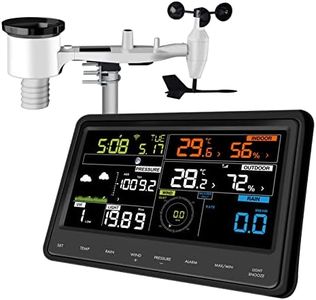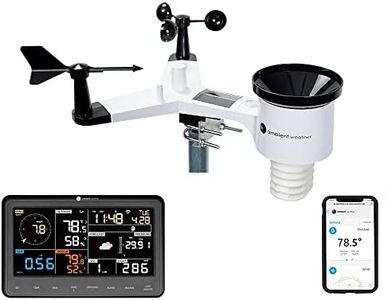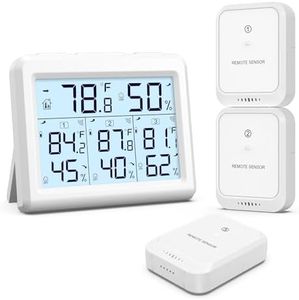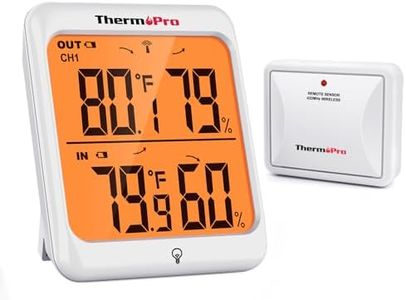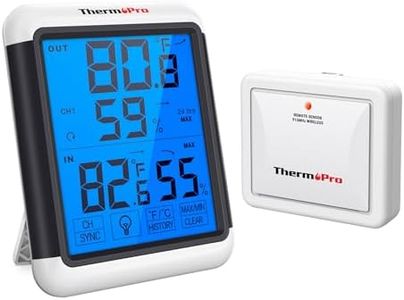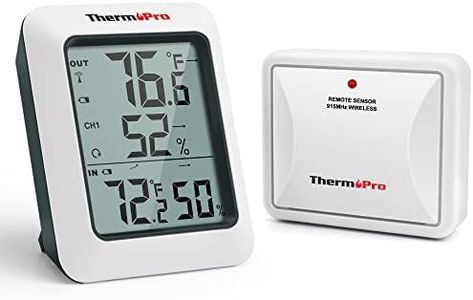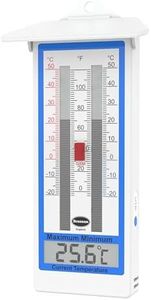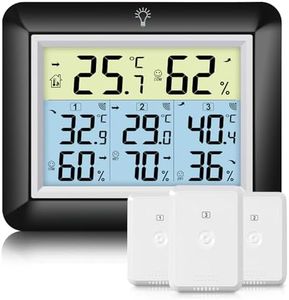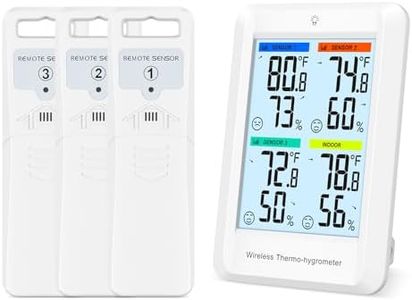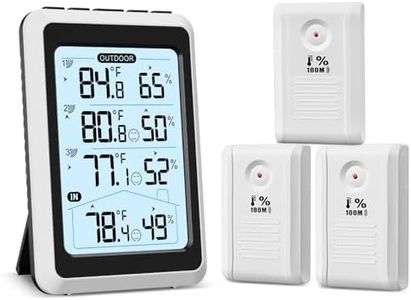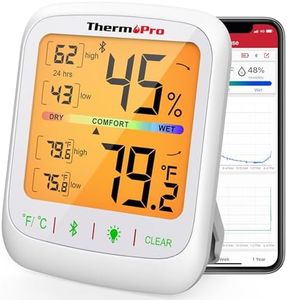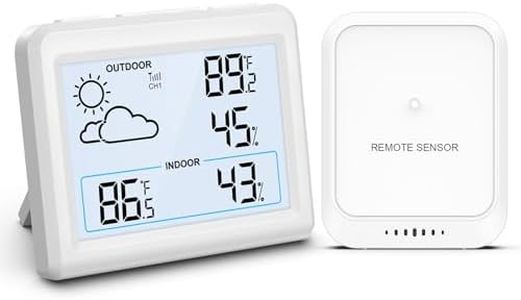We Use CookiesWe use cookies to enhance the security, performance,
functionality and for analytical and promotional activities. By continuing to browse this site you
are agreeing to our privacy policy
10 Best Indoor Outdoor Thermometers
From leading brands and best sellers available on the web.Buying Guide for the Best Indoor Outdoor Thermometers
Choosing an indoor-outdoor thermometer is all about finding a device that gives you reliable temperature readings for inside your home and outside, in a way that's easy to read and works for your living situation. Start by thinking about where you want to install the thermometer display and place the outdoor sensor. Make sure the setup is simple for you and the readings are easy to understand at a glance. Consider whether you want extra features like humidity tracking or weather forecasts. Ultimately, the best thermometer for you is one that fits your daily habits, the size and layout of your space, and how detailed you want the information to be.Display TypeThe display type refers to how the thermometer shows the temperature readings, often either with a digital screen or a traditional analog dial. This matters because a clearer display is easier to read from a distance and in different lighting conditions. Digital screens generally offer more clarity, additional information and sometimes backlighting, while analog dials are more old-fashioned but require no batteries. If you prefer quick, modern displays and added data like humidity or trends, a digital type is best. If you value simplicity, reliability, and have no need for extra info, analog can be a solid choice.
Sensor RangeSensor range describes how far away the outdoor sensor can be placed from the indoor display unit while still transmitting accurate readings. This is important because your house size, wall thickness, and interference from other electronics will affect performance. Short ranges (up to 30 feet) suit small apartments or close windows; medium ranges (30–100 feet) fit most houses and let you put the sensor anywhere in the yard; long ranges (100+ feet) are best for large properties or when you need to get readings from a distant spot. Choose a range that matches the distance from where you’ll mount the outdoor sensor to your indoor display.
Power SourceIndoor and outdoor thermometers can run on batteries, plug into mains electric, or use solar power. Power source matters for convenience and maintenance: battery-powered units offer easy placement anywhere but need battery changes, plug-in types don't need refueling but must be near outlets, and solar units are low-maintenance but depend on sunlight. If placing the sensor somewhere hard to reach, consider power options that don’t require frequent attention. If you want to avoid battery replacements, favor plug-in displays and consider sensor placement for solar-powered or battery options.
Additional Measurements (Humidity, Weather Trends, etc.)Some indoor-outdoor thermometers provide more than just temperature, such as humidity levels or simple weather trend forecasts. This can help with home comfort and caring for sensitive items like plants or musical instruments. If you only care about temperature, a basic model is fine. If you want to monitor air quality or moisture (important for allergies or preventing mold), or you like to get a quick idea of rising/falling trends, pick a model with these extra readings.
Ease of Installation and UseEase of installation covers whether you need tools to set up the display or sensor and how easily you can get it running. A simple setup is crucial if you aren’t comfortable with technical gadgets. Some models are just 'plug and play,' while others need wall mounting or complex pairing between display and sensor. If you’re looking for hassle-free monitoring, check that your thermometer is straightforward to install and the buttons or menus are intuitive.
Accuracy and Update FrequencyAccuracy refers to how close the thermometer’s readings are to the real temperature, while update frequency means how often those readings refresh. High accuracy is important if you need precise control, like managing heating systems or protecting temperature-sensitive belongings. Update frequencies can range from every few seconds to every minute or more. If you like real-time updates, faster is better. For general usage, precise eighths of degrees may not be necessary; just look for consistently reliable readings that refresh a few times each minute.
